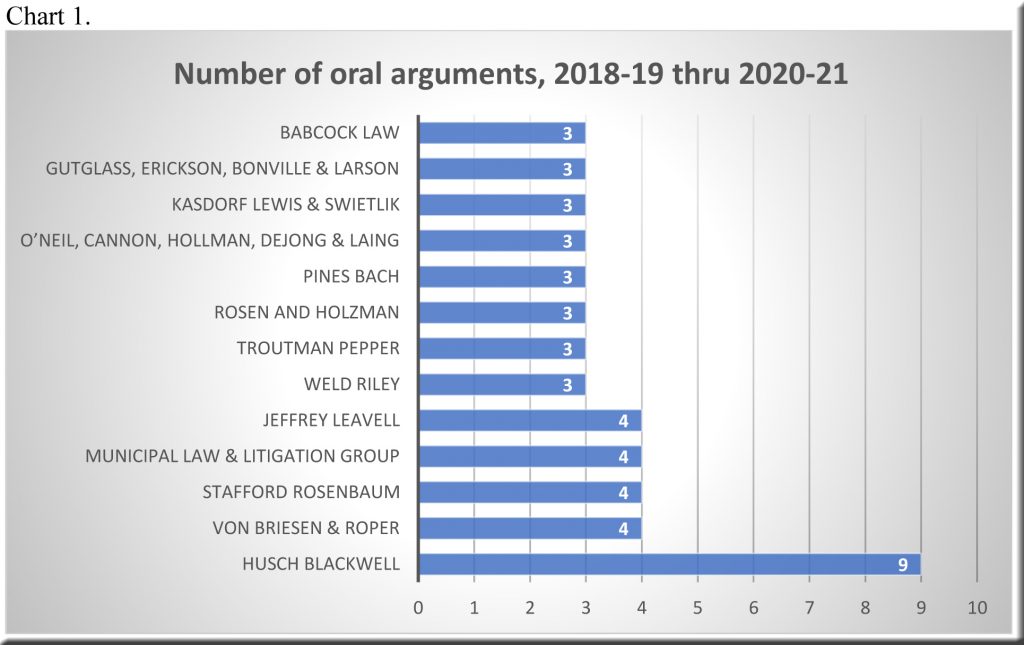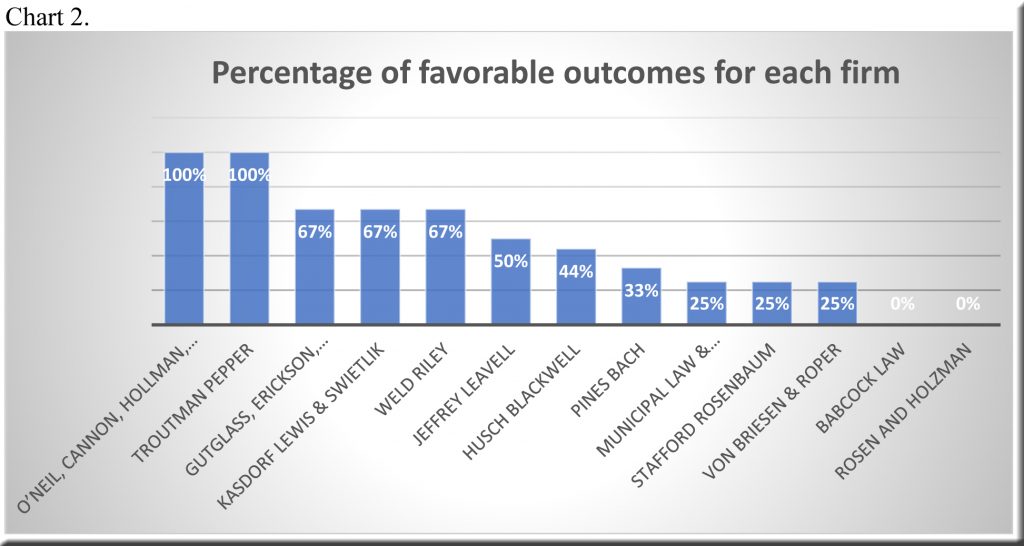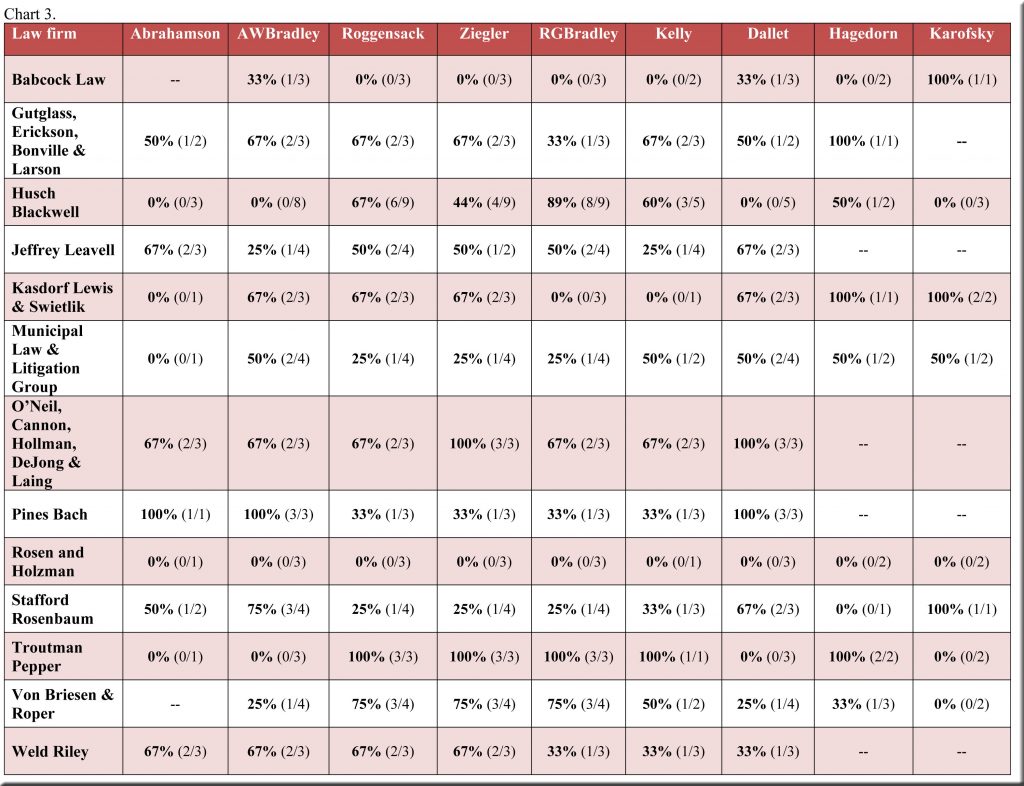In the spring of 2019 we examined the success rates of law firms most active in the Wisconsin Supreme Court over the previous decade (2008-09 through 2017-18), and today we’ll update that post by exploring data from the most recent three terms.[1] As in the original post, our focus remains confined to private law firms, with state agencies and non-profit organizations excluded.[2]
In order to make the initial cut, a firm needed to deliver at least three oral arguments during the period under scrutiny—2018-19 through 2020-21—which yielded a set of 15 firms. I then removed a small number of cases from consideration,[3] which left 13 firms that still participated in three or more, and they appear in Chart 1.[4]
Only four of these firms—Kasdorf Lewis & Swietlik, Stafford Rosenbaum, von Briesen & Roper, and Husch Blackwell—also figured in the previous post,[5] while several prominent firms in that earlier post did not resurface in the chart above.
Next, we calculate each firm’s success rate—the percentage of cases in which a firm achieved a favorable outcome for its clients. As shown in Chart 2, O’Neil, Cannon, Hollman, DeJong & Laing and Troutman Pepper each prevailed in all of their cases, while three other firms did so in two-thirds of their appearances.
With the information from Chart 2 in hand, we can determine how often each law firm won the support of every individual justice. The results are displayed in Chart 3, which provides some interesting details. Husch Blackwell, for instance, did well with the conservative justices but could not gain a single vote cast by any of the liberals. This contrast was even more striking with Troutman Pepper, which collected every vote from the conservatives and none of the votes from the liberals. Pines Bach was the closest equivalent toward the other end of the spectrum, winning all the votes from liberal justices but only 33% from conservatives.
Although both O’Neil, Cannon, Hollman, DeJong & Laing and Troutman Pepper won all of their cases, Chart 3 indicates that they did so in different ways. Hired in politicized cases, Troutman Pepper prevailed entirely on the strength of the conservative majority, while O’Neil, Cannon acquired at least two-thirds of the votes cast by every justice who participated in their cases, which pertained broadly to financial concerns.
(click on the chart to enlarge it)
[1] We are considering cases decided during the three terms under review. In other words, if oral argument occurred during 2020-21 term, but the case was not decided by the end of the term, it is not included in this post.
[2] Non-profits include such entities as the Remington Center and the Wisconsin Institute for Law and Liberty.
[3] The following cases were subtracted: (1) three in which a firm delivered an oral argument as an amicus party; (2) four in which the ruling made it difficult to classify the outcome as favorable or unfavorable for participating law firms; and (3) one 3-3 per curiam decision.
[4] Troutman Pepper’s total includes arguments by Troutman Sanders before its merger with Pepper Hamilton to become Troutman Pepper. Gutglass, Erickson, Larson & Schneider’s total includes arguments in 2018-19 by Gutglass, Erickson, Bonville & Larson.
[5] Husch Blackwell’s total in the earlier post was included in the figure for Whyte Hirschboeck Dudek, which Husch absorbed in 2016.



Speak Your Mind